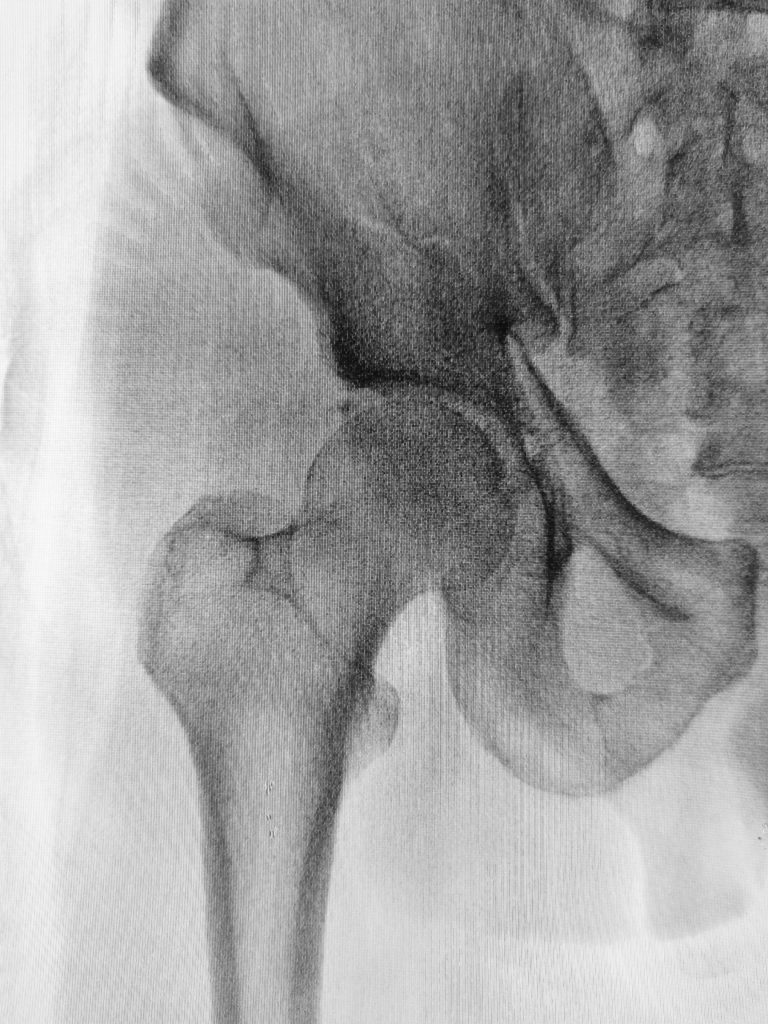When an older loved one sustains a serious injury it is traumatic for the entire family and mine is no exception. My grandmother and father enjoyed 90 wonderfully active years; however, their independence was lost the same way more than one-third of a million people lose their independence each year… hip fractures! As a doctor of orthopedic physical therapy, I feel remise that I could not prevent this from happening. What most of us fail to realize is that his fracture, like many, was more than just an orthopedic problem …it involves age, gender, diet, exercise, vision, leg strength, medications, environmental risks, and vestibular problems (inner ear problems effecting balance).
Injuries due to falling are a very common problem in the elderly. Hip fractures are the most common injury due to falling in the seniors. According to the American Academy of Orthopaedic Surgeons, each year more than 300,000 people are hospitalized for hip fractures in the United States. These fractures represent 72% of all fracture costs, totaling more than 12 billion dollars in 2005 and, not surprisingly, 90% occurred in those 65 and older. Most hip fracture patients who previously lived independently will require family assistance, home or long term care and 50% will require a cane or walker.
Several risk factors for hip fractures have been identified. While some factors are somewhat controllable and may improve bone quality, (diet, exercise, smoking, alcohol) others are not.
Hip Fracture Risk Factors:
- Age: Risk increases with age 65 and older
- Gender: Women are 2-3 times more likely than men
- Heredity: A family history of hip fractures with age
- Race: Caucasians and Asians are at greater risk, especially small-boned & slender
- Nutrition: A low calcium diet or reduced ability to absorb calcium
- Personal Habits: Smoking or excessive alcohol use increases risk
- Physical Impairments: Physical frailty, arthritis, poor balance & coordination,
Vestibular or inner ear problems
- Mental Impairments: Senility, dementia, Alzheimer’s disease
- Medication: Some may cause weakness or dizziness
- Poor Balance & Coordination
- Deconditioning: Poor fitness level and slow walking speed
- Environmental Factors: Trip hazards such as area rugs, poor lighting, stairs, pets
Preventing a fall can not only save your independence but also your life! Preventing injuries from falls reduces the need for nursing home placement.
Tips to Prevent Falls/Fractures:
- Diet & Hydration: Proper nutrition and hydration provides adequate amounts of vitamins and minerals to maintain energy.
- Exercise: Exercise and activity improves strength, flexibility and balance.
- Medication: Consult a pharmacist or physician regarding medications that can cause: drowsiness, dizziness, lightheadedness, faintness, fatigue, tiredness, unsteadiness, blurred vision, double vision, confusion, or otherwise affect alertness, balance or coordination.
- Positional Changes: Sitting for a few minutes and tapping your toes, stand up slowly before getting out of bed and raise head of bed with a wedge pillow.
- Alcohol: Be cautious with alcohol since it interferes with alertness, balance, coordination and reflexes.
- Illness: Treat respiratory infections such as ear infections, colds, and flu which can lead to weakness and falls.
- Frequent Urination: Be cautious with urgency, especially at night. Consider bedside commode and a grab bar by toilet. Turn lights on and put on eyeglasses to supplement vision. Night lights are recommended.
- Vision: Check eyesight and hearing regularly. Poor eyesight makes it difficult to see potential hazards. Update old eyeglasses. Inner ear problems can affect balance. Adequate lighting is paramount. Nightlights in bedroom, bathroom and hallway are recommended.
- Assistance Devices: Use assistive devices when negotiating uneven terrain or when you feel weak or tired. To avoid falls in the bathroom install grab bars in the shower, tub, and toilet areas. Use bathmats with suction cups or nonslip adhesive strips in tub/shower. Consider a shower stool or bench and an elevated toilet seat.
- Good Footing: Proper footwear with a flat sole, wide base and nonslip grips are important. Footwear should be tied securely and fit snugly. Do not walk in stocking feet.
- Remove Hazards: Remove rugs and runners that slip or attach nonslip backing. Keep pathways free of clutter.
- Safety on Stairs: Install secure handrails on both sides. Improve lighting. Ensure carpeting on stairs is firmly attached.
- Walkways: Sidewalks and walkways should be clear, well lit and free of snow and ice. Repair uneven paving.
- Eliminate clutter: Do not store items on steps. Rearrange furniture to move around easier. Watch out for pets.
- Store Items Within Reach: Limit reaching by storing frequently used items where they can be reached easily. If reaching is required, use a stepstool with high, sturdy handrails.
NEXT MONDAY – Read Dr. Paul J. Mackarey “Health & Exercise Forum!” Hip Fractures - Part II of II
This article is not intended as a substitute for medical treatment. If you have questions related to your medical condition, please contact your family physician. For further inquires related to this topic email: drpmackarey@msn.com
Paul J. Mackarey PT, DHSc, OCS is a Doctor in Health Sciences specializing in orthopaedic and sports physical therapy. Dr. Mackarey is in private practice and is an associate professor of clinical medicine at GCSOM.
For all of Dr. Mackarey's Articles visit: www.mackareyphysicaltherapy.com/forum

